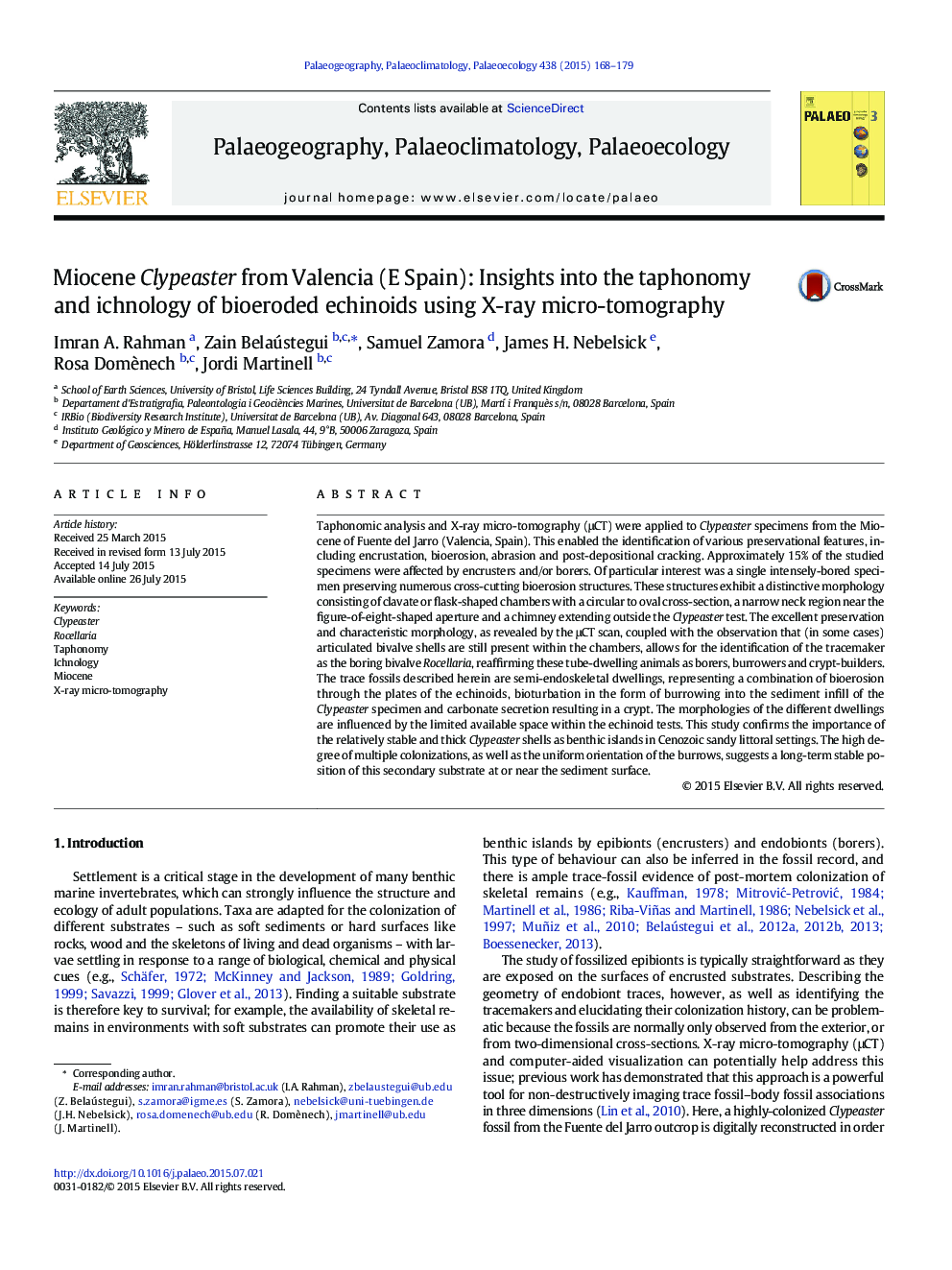| کد مقاله | کد نشریه | سال انتشار | مقاله انگلیسی | نسخه تمام متن |
|---|---|---|---|---|
| 6349619 | 1622152 | 2015 | 12 صفحه PDF | دانلود رایگان |

- Taphonomic analysis is applied to Miocene Clypeaster from Valencia (E Spain).
- X-ray micro-tomography applied to one test reveals high colonization by bivalves.
- Bivalves construct their dwellings by boring, burrowing and carbonate secretion.
- X-ray μCT scans allow identifying these bivalves as belonging to genus Rocellaria.
- Gastrochaenids use Clypeaster tests as benthic islands in sandy littoral settings.
Taphonomic analysis and X-ray micro-tomography (μCT) were applied to Clypeaster specimens from the Miocene of Fuente del Jarro (Valencia, Spain). This enabled the identification of various preservational features, including encrustation, bioerosion, abrasion and post-depositional cracking. Approximately 15% of the studied specimens were affected by encrusters and/or borers. Of particular interest was a single intensely-bored specimen preserving numerous cross-cutting bioerosion structures. These structures exhibit a distinctive morphology consisting of clavate or flask-shaped chambers with a circular to oval cross-section, a narrow neck region near the figure-of-eight-shaped aperture and a chimney extending outside the Clypeaster test. The excellent preservation and characteristic morphology, as revealed by the μCT scan, coupled with the observation that (in some cases) articulated bivalve shells are still present within the chambers, allows for the identification of the tracemaker as the boring bivalve Rocellaria, reaffirming these tube-dwelling animals as borers, burrowers and crypt-builders.The trace fossils described herein are semi-endoskeletal dwellings, representing a combination of bioerosion through the plates of the echinoids, bioturbation in the form of burrowing into the sediment infill of the Clypeaster specimen and carbonate secretion resulting in a crypt. The morphologies of the different dwellings are influenced by the limited available space within the echinoid tests. This study confirms the importance of the relatively stable and thick Clypeaster shells as benthic islands in Cenozoic sandy littoral settings. The high degree of multiple colonizations, as well as the uniform orientation of the burrows, suggests a long-term stable position of this secondary substrate at or near the sediment surface.
Journal: Palaeogeography, Palaeoclimatology, Palaeoecology - Volume 438, 15 November 2015, Pages 168-179